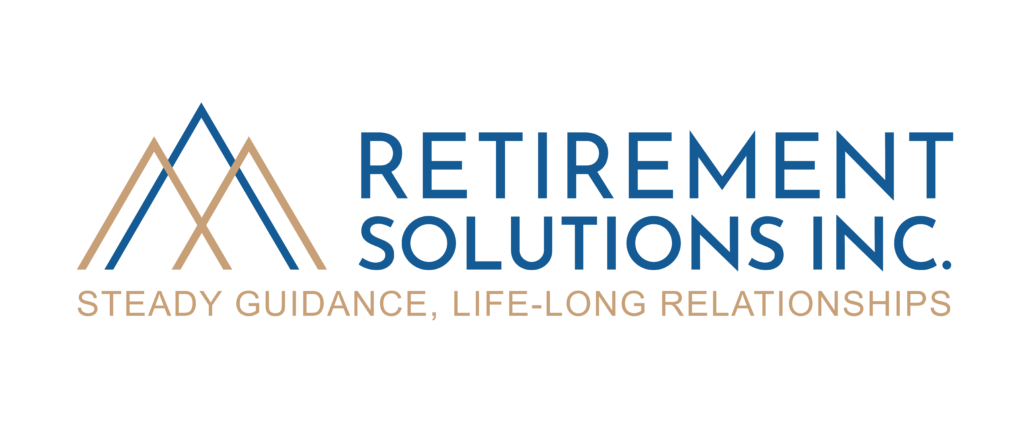Building a Business is Like Being a Parent
D
Business Owners Must Stay Ahead of Daily Events and Keep the End in Mind
Building a business is kind of like being a parent. You start with an infant enterprise that needs constant attention and often deprives you of sleep, absorbs a big chunk of your savings, and pushes all of your hobbies to the back burner. You foster it through various stages of growth, including some rocky times, and help it stand on its own. Eventually, you may rely on it to carry on your legacy and take care of you financially.
Making the transition from taking care of your business to having the business take care of you in retirement is the purpose of succession planning. A good plan helps ensure the orderly
transfer of a business to the next generation while providing you with retirement income or a
nest egg to secure your future.
Let’s review succession planning and the kinds of retirement options small business
owners should consider.
Succession Planning
A succession plan is especially important if you want the business to continue well beyond your career or your lifetime. It also matters if you need to monetize your investment by selling the business.
The first step in a succession plan is to figure out what you want for and from your business in the long term. Is your goal to pass it on to later generations within the family or current employees? If you plan to sell it, how do you structure the sale? Can your buyers pay cash, or do you need to finance a portion of the sale? Does the money fund your retirement or become a financial legacy for your heirs?
Or does the end of your working life mean closing the doors? Some small businesses are so tied to
the owner’s skills and interests that the owner’s retirement effectively brings the business to an end.
This might be the case for, say, a craft-based business, a professional practice, a consultancy, or a
design firm where you are the main talent.
Internal Succession Plan
Once you clarify what you want, don’t wait too long to do the actual planning. For an internal succession plan, start about 10 years ahead of your anticipated retirement. If you’re less than 10 years away from retirement, don’t worry, you’ll just want to start planning soon.
The biggest challenges to internal succession are identifying the successor and developing that person’s skills so they can carry on the business. Sometimes, you need to go through several potential successors before finding the right one. If you keep the business in the family, make sure your successor really wants the job. Grooming a family successor whose heart is not in the business is a recipe for both business and family struggles.
Selling The Business
If you plan to sell the business, starting five years prior to retirement is probably sufficient. You need to get the financial books in order and make sure you have the appropriate staffing. Leave some time to put your business on the market ahead of and during the transition.
A typical challenge with selling a business, whether inside or outside the family, is how to structure the deal. Financing the purchase is an option that carries some risks. It’s safer to secure the purchase against collateral that isn’t the business itself.
Selling a Portion of The Business
Another choice is to start by selling a portion, perhaps 10 percent or 20 percent, of shares to the potential successor, then selling more over time until the new owner owns the majority. Keeping some ownership can provide you with dividends to help fund your retirement.
Ending The Business
If your business ends when you retire, and it isn’t a saleable asset, then you need a cessation plan. This plan is simple—among other things, it involves collecting all accounts receivable, settling all accounts payable and other debts, notifying employees and creditors, selling inventory and assets, and filing final tax returns. While closing a business is largely straightforward, you need to make sure you use part of the income from your business to provide for your future.
Don’t Ignore Retirement Savings
Being your own boss means providing for your own retirement. It also means that there isn’t an employer looking over your
shoulder who will sign you up for a plan. You have to be more proactive in setting your retirement money aside. But how?
Start with the end in mind. Understand the prospects and limitations of your business including when and how you’ll add
to your retirement savings. Despite the best business plan, it is too easy to assume that your business is your retirement
plan—and that could be a very costly mistake.
To achieve good retirement savings, many people put aside 10 percent of income as young adults and then during the middle age—typically the time of highest earnings—practice “burst savings.” This is the practice of saving raises, greater slices of
pay, and windfalls and many believe it leads to financial success.
Burst savings are far more easily said than done for you, an entrepreneur who will almost certainly endure extreme income
highs and lows over your working life. In the beginning, keep your personal overhead as low as you can and save as much of any cash influx as possible until you secure a personal net worth you’re comfortable with.
Know how much you need in savings if you want to or must stop working someday. Understand your own needs for financial comfort, as well as your investment portfolio’s payout rate. This is where a financial planner can lend value to an entrepreneur.
Be smart about risk. Confidence can serve entrepreneurs well. It’s important, though, to train yourself to take calculated risks
after cool analysis.
Retirement Savings Options
Having a variable income, which is often the case for people who own a business, makes it harder to save for retirement. When it comes to saving for your future self, where do you start and which is the best option?
Here are a few common retirement accounts for business owners:
Solo 401(k). You are the employee and employer, so you can add both contributions and additional self-employment income to your account. The primary appeal of a solo 401(k) is the high contribution limit. If you’re an entrepreneur with no employees, you can include your spouse. Check the IRS website for more details about the latest contribution limits.
SEP IRA. You can contribute as much as 25 percent of your net self-employment income, up to a certain amount. If you build your new business while holding another job where you contribute to a 401(k), you can still contribute to a SEP, but there are additional rules.
Savings incentive match plan for employees (SIMPLE) IRA. Similar to the Solo 401(k), some
contributions are considered, for tax purposes, to be from the employer and some from the employee.
Employee contributions cannot exceed a certain limit and employers must either match each employee’s salary reduction dollar for dollar up to 3 percent of compensation or make a standard non-elective contribution.
Defined benefit plan. A traditional pension in which employees expect a fixed and pre-determined benefit at retirement, these plans are designed for high-cash flow businesses with consistent revenues. Though regular and high contributions are required from entrepreneurial employers, these plans can provide successful entrepreneurs much higher tax benefits than other types of retirement accounts.
Talk to your financial advisor to help determine which retirement vehicle is right for you.
Source: U.S. Department of the Treasury. Internal Revenue Service. Available from www.irs.gov. Accessed on June 7, 2019.




